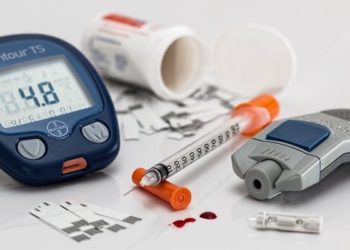Dementia is associated with high rates of sleep-related breathing disorders
1. In this meta-analysis, it was found that the pooled prevalence of sleep-related breathing disorders (SRBDs) among dementia patients was 59%. Obstructive sleep apnea (OSA) was the SRBD with the highest prevalence, at 55%, followed by unspecified SRBDs.
2. Furthermore, the highest prevalence of SRBDs among dementia subtypes was Alzheimer’s dementia, followed by Parkinson’s dementia.
Evidence Rating Level: 1 (Excellent)
Sleep-related breathing disorders (SRBDs), including obstructive sleep apnea (OSA), central sleep apnea (CSA), and other unspecified disorders, are very common among people with dementia. SRBDs are associated with worsening cognitive impairment and quality of life in this population. However, prior studies have lacked evidence on the prevalence of SRBDs among various dementia subtypes and have been limited by self-reported data. Therefore, the purpose of this meta-analysis was to look at the overall prevalence of SRBDs in dementia patients, as well as the prevalence of SRBDs based on dementia subtypes.
Of 1282 identified records, 20 studies (n=1461 participants) were included from 1986 to 2020. Studies were included if they were observational studies with cohort and cross-sectional designs, included patients ages 18 years or older with a diagnosis of dementia or Parkinson’s disease with mild or major cognitive impairment, and had SRBDs as an outcome that was diagnosed with objective measurements. Studies were excluded if they were meta-analyses or reviews, had insufficient data, or measured SBRDs using subjective measurements. The study was carried out according to PRISMA guidelines. The primary outcome was the pooled prevalence of SBRD in dementia patients.
The results demonstrated that the prevalence of SRBDs among dementia patients was 59%, with the most common being OSA. Alzheimer’s dementia had the highest prevalence of SRBDs at 89%, followed by Parkinson’s dementia with 56%. Furthermore, higher rates of SRBDs among dementia patients were found in males and in obese patients. The study was limited by the small sample size of only 20 studies. Nonetheless, the present study demonstrated an important association between SRBDs and different dementia subtypes.
Click to read the study in Sleep Medicine
Image: PD
©2023 2 Minute Medicine, Inc. All rights reserved. No works may be reproduced without expressed written consent from 2 Minute Medicine, Inc. Inquire about licensing here. No article should be construed as medical advice and is not intended as such by the authors or by 2 Minute Medicine, Inc.







